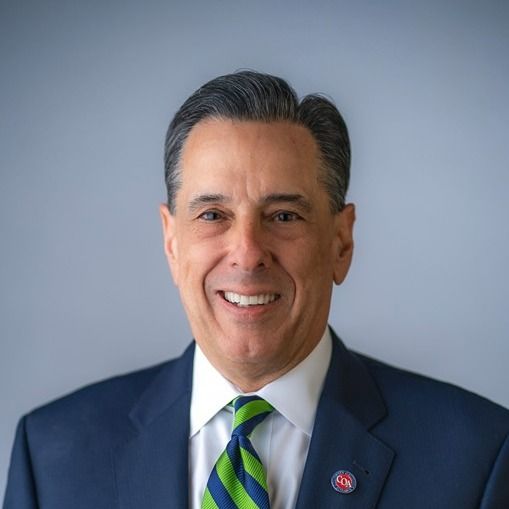- Center on Health Equity & Access
- Clinical
- Health Care Cost
- Health Care Delivery
- Insurance
- Policy
- Technology
- Value-Based Care
Community Oncology Reacts to Trump's Drug Pricing Executive Order
An executive order signed on Tuesday, March 15, necessitated a change in plans for this panel discussion from the 2025 Community Oncology Conference, with the assembled experts, moderated by Ted Okon, MBA, executive director of the Community Oncology Alliance, speaking to how the order would reverberate across the community oncology space.
The original plan for the session, “The Impact of Politics and Policy on Community Oncology,” a panel discussion at the 2025 Community Oncology Conference from the Community Oncology Alliance (COA), was for the assembled experts, moderated by Ted Okon, MBA, executive director of COA, to discuss the recent upheaval in Washington, DC—in particular, the personnel changes and legislative issues. However, an executive order signed on Tuesday, March 15, necessitated a change in plans.
This executive order from President Donald J. Trump is meant to target anticompetitive behavior in the drug market through increased transparency of pharmacy benefit manager (PBM) fees, lowering of drug prices, reforms to the Medicare Drug Price Negotiation Program, and promoting competition for high-cost prescription drugs.1,2
Ted Okon, MBA | Image Credit: © Community Oncology Alliance

“Just so everybody understands the executive order, it doesn't have any authority. It's not statute, alright, but I think it's very much a game plan of what is being signaled to the Congress, and if the Congress doesn't do it, HHS,” Okon emphasized. “It has a lot of implications for community oncology.”
Joining Okon was Ben Jones, senior vice president of government relations and marketing, McKesson, and The US Oncology Network; Jerrica Mathis, vice president, Federal Government Relations, Cardinal Health; Shelley Mui-Lipnik, Esq, head, Federal Government Relations, Cencora; Meagan O’Neill, MS, executive director, Association of Cancer Care Centers; and Kristine Rufener, senior director, Congressional Affairs, Association for Clinical Oncology, which is the advocacy affiliate of the American Society for Clinical Oncology (ASCO).
Decoding the Executive Order
Trump’s recent executive order on lowering drug prices altered the planned agenda for this discussion, with Okon using his trademark dry wit to note, “There’s not much going on in DC at all, so we may not have enough to talk about in 45 minutes.”
Still, this shift in goals for this discussion highlighted both the potentially unexpected impact of the executive order and the dynamic nature of health care policy and its immediate relevance to the community oncology landscape. It also represented an opportunity, Okon noted, to analyze the order’s directives, thereby emphasizing its significance as indication of the administration’s policy direction for Congress and/or HHS.
Among the panelists, cautious optimism mingled with the need for a deeper understanding, with Rufener highlighting ASCO’s longstanding advocacy efforts around transparency on the 340B Drug Pricing Program, PBM reform, and lowering patient costs, which align with some of the order’s goals.
Kristine Rufener | Image Credit: © Association for Clinical Oncology

“I think we can all agree that we are supportive of lowering these increasing costs of cancer treatment and making sure that patients get access to the care that they need when they need it,” she stated.
Jones, too, sees opportunities in the executive order, underscoring potential gains from increased transparency and recognition of the need for site-neutral payments—both long championed by community oncology—as well as the Inflation Reduction Act. He also acknowledged ambiguity in its language, the potential for positive disruption, and risks.
“The harmonization of timing for [Medicare] Part B and Part D in the negotiation provision was almost a direct ask to Congress. I do think that’s where the opportunity lies,” Jones explained. “We've worked very closely on advancing a number of these priorities, and it's great to see them come to fruition and, hopefully, see the light of day. However, we also know that this president has continued to focus on some other risks, including how to use the IRA to implement most-favored-nation pricing.”
Ben Jones | Image Credit: © McKesson

Addressing Systemic Challenges
Here the conversation pivoted to issues within the health care landscape that are closely intertwined with the implications of the drug pricing executive order, with the panelists highlighting challenges inherent in the 340B Drug Pricing Program, as understanding these concerns could potentially pave the way for legislative or regulatory reform.
“Personally, I worry about a blunt instrument or a very wholesale approach to do away with something like that entirely,” O’Neill stated. “I think the reality is, it is a lifeline for many organizations. But do we need much stronger oversight and compliance monitoring of that program? Absolutely.”
Meagan O’Neill, MS | Image Credit: © Association of Cancer Care Centers

There is an intricate relationship, they explained, between legislative action in Congress and the roles that administrative agencies, like HHS and CMS, play in shaping health care policy, so they also discussed how the intentions of the executive order could be translated into concrete changes. To do so, engagement and advocacy efforts must remain proactive, the panel agreed, to ensure that any reforms will ultimately benefit community oncology practices and, most importantly, their patients.
“We’ve all been doing this collectively, probably for 100 years,” Mui-Lipnik said. “Compared with when he was president last time around, I thought, ‘I got this this time around.’ No, I don’t. 2.0 is a lot different than 1.0 was.”
Site-neutral payments entered the conversation again here, in particular how they aim to equalize reimbursement rates between hospital outpatient departments and physician offices and can add an element of financial stability to community-based cancer care. Ensuring patients have, and then don’t lose, access to affordable, high-quality cancer care is paramount, with site-neutral payments plausibly providing patients with greater choice in where they can receive care and reducing their out-of-pocket care costs.3
Shelley Mui-Lipnik, Esq | Image Credit: © Cencora

Collectively, the panelists underscored the need for continued vigilance and active participation in the policy-making process to navigate the evolving regulatory environment and ensure a sustainable future for community oncology.
Ensuring Patient Access and Affordability
Future strategies, anticipating challenges, and maintaining patient-centered care across the ever-evolving policy landscape were the final focus of the assembled panel of experts as they delved into the practical implications of the previously mentioned policy shifts and how community oncology practices can effectively navigate these changes.
A key theme that emerged, too, was how advocacy is vital at the federal and state levels to ensure that any proposed reforms truly benefit patients and community care providers, especially when current reimbursement models and the administrative burdens associated with new regulations pose barriers to care access.
One significant challenge highlighted is the issue of co-pays for patient support services, with the panelists expressing frustration over Medicare and other payers requiring cost sharing for services aimed at addressing patients' social needs. This is seen as a barrier to equitable access, particularly for vulnerable populations, with the panelists emphasizing that the payments are often insufficient to cover these essential services.
The panelists noted the importance of technology to streamline workflows, enhance patient care, and leverage patient education and data management, but issued caution against replacing the human element in patient navigation, noting that direct patient interaction and personalized support must remain.
They issued a collective call to action, urging community oncology leaders to actively engage in advocacy efforts to shape policies that support sustainable practices and ensure that patients receive comprehensive care they can afford. Their collective hope is for a future where reimbursement models align with the value of patient navigation and where technological advancements empower, rather than replace, the human touch in oncology care.
“Cancer care issues are still bipartisan. We still have issues that have broad support across both sides of the aisle, things like prior authorization, Medicare payment, some other really important issues,” Rufener asserted. “Once reconciliation is passed, we are going to continue to work on all those issues. It is encouraging that the politics kind of take a back seat to some good policy, especially once around patient care.”
References
1. Steinzor P. Trump signs executive order to lower drug prices. AJMC®. April 16, 2025. Accessed May 2, 2025. https://www.ajmc.com/view/trump-signs-executive-order-to-lower-drug-prices
2. Lowering drug prices by once again putting Americans first. The White House. April 15, 2025. Accessed May 2, 2025. https://www.whitehouse.gov/presidential-actions/2025/04/lowering-drug-prices-by-once-again-putting-americans-first/
3. Avalere Health LLC. Examining the impact of site neutral payment on costs for cancer care. American Cancer Society Cancer Action Network. Accessed May 2, 2025. https://www.fightcancer.org/sites/default/files/acs_can_site_neutral_issue_brief_-_final_10-19-23.pdf
